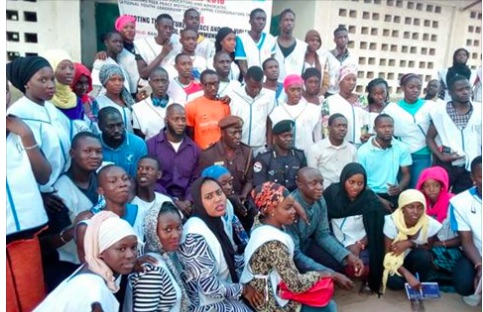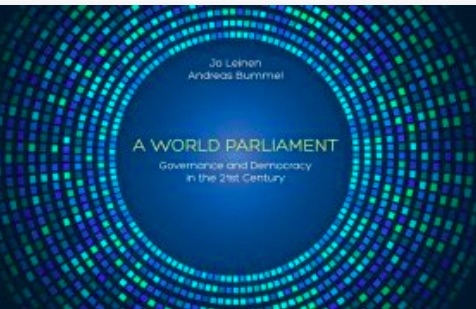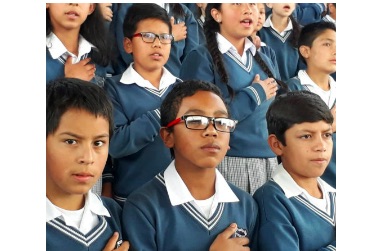. HUMAN RIGHTS .
An article from Amnesty International
The Israeli authorities must put an immediate end to the excessive and lethal force being used to suppress Palestinian demonstrations in Gaza, Amnesty International said as fresh protests have started today [April 13].

(Click on photo to enlarge)
Following the deaths of 26 Palestinians, including three children and a photojournalist, Yasser Murtaja, and the injuring of around 3,078 others during protests on the past two Fridays, Amnesty International is renewing its call for independent and effective investigations into reports that Israeli soldiers unlawfully used firearms and other excessive force against unarmed protesters.
“For the past two weeks, the world has watched in horror as Israeli forces unleashed excessive, deadly force against protesters, including children, who merely demand an end to Israel’s brutal policies towards Gaza and a life of dignity,” said Magdalena Mughrabi, Amnesty International’s Deputy Director for the Middle East and North Africa.
“The Israeli authorities must urgently reverse their policies and abide by their international legal obligations. Their horrifying use of live ammunition against unarmed protesters, and the resultant deaths, must be investigated as possible unlawful killings.
“The Israeli authorities must respect the Palestinians’ right to peaceful protest and, in the event that there is violence, use only the force necessary to address it. Under international law, lethal force can only be used when unavoidable to protect against imminent threats to life.”
Eyewitness testimonies as well as videos and photographs taken during demonstrations point to evidence that, in some instances, unarmed Palestinian protesters were shot by Israeli snipers while waving the Palestinian flag or running away from the fence.
(Article continued in right column)
Rights of the child, How can they be promoted and protected?
Presenting the Palestinian side of the Middle East, Is it important for a culture of peace?
(Article continued from left column)
Among those injured since Friday 30 March, there were around 445 children, at least 21 members of the Palestinian Red Crescent’s emergency teams, and 15 journalists. According to the Ministry of Health in Gaza, some 1,236 people have been hit by live ammunition. Others have been injured by rubber bullets or treated for tear gas inhalation dropped by drones. The World Health Organization expressed concern that nearly 350 of those injured may be temporarily or permanently disabled as a result of their injuries. So far, at least four people have had leg amputations.
On two consecutive Fridays, tens of thousands of Palestinians, including men, women and children, have gathered in five camps set up around 700 meters away from the fence that separates the Gaza Strip from Israel to reassert their right of return and demand an end to nearly 11 years of Israel’s blockade. While protests have been largely peaceful, a minority of protesters have thrown stones and, according to the Israeli army, Molotov cocktails in the direction of the fence. The Israeli forces claim that those killed were trying to cross the fence between Gaza and Israel or were “main instigators.” There have been no Israeli casualties.
While the Israeli army indicated that it would investigate the conduct of its forces during the protests in Gaza, Israel’s investigations have consistently fallen short of international standards and hardly ever result in criminal prosecution. As a result, serious crimes against Palestinians routinely go unpunished.
In a statement made on 8 April, Fatou Ben Souda, the Prosecutor of the International Criminal Court expressed concern at the deaths and injuries of Palestinians by Israeli forces, reminding that the situation in Palestine was under preliminary examination by her office.
“Accountability is urgently needed not only for this latest spate of incidents where excessive and lethal force has been used by Israel but also for decades of potentially unlawful killings, including extrajudicial executions, and other crimes under international law.”
The protests were launched to coincide with Land Day, and are demanding the right of return for millions of refugees to villages and towns in what is now Israel.
The protests are expected to last until 15 May, when Palestinians commemorate the Nakba or “great catastrophe”. The day marks the displacement and dispossession of hundreds of thousands of Palestinians in 1948-9 during the conflict following the creation of the state of Israel.








